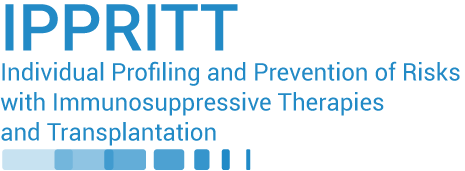Population pharmacokinetic model and Bayesian estimator for two tacrolimus formulations - twice daily Prograf(®) and once daily Advagraf(®).
Abstract
WHAT IS ALREADY KNOWN ABOUT THIS SUBJECT •Tacrolimus is an immunosuppressant agent, largely used in kidney transplantation, with a narrow therapeutic range. •Therapeutic drug monitoring of tacrolimus exposure improves the efficacy and toxicity of this drug. •Separated Bayesian estimators have been developed to estimate tacrolimus exposure following administration of Prograf® and the prolonged release formulation Advagraf®. WHAT THIS STUDY ADDS •A population model was developed to compare the pharmacokinetics of 32 patients treated with Prograf® and 41 treated with Advagraf®. •A mixture model and a model using formulation as covariates were developed to describe the bimodal distribution in the absorption rate following Advagraf® administration. Comparison of these two models showed that the nonmixture model was adequate. •A single Bayesian estimator was developed to estimate the exposure for both formulations, which is more suitable for clinical practice. AIM To investigate the differences in the pharmacokinetics of Prograf® and the prolonged release formulation Advagraf® and to develop a Bayesian estimator to estimate tacrolimus inter-dose area under the curve (AUC) in renal transplant patients receiving either Prograf® or Advagraf®. METHODS Tacrolimus concentration-time profiles were collected, in adult renal transplant recipients, at weeks 1 and 2, and at months 1, 3 and 6 post-transplantation from 32 Prograf® treated patients, and one profile was collected from 41 Advagraf® patients more than 12 months post-transplantation. Population pharmacokinetic (popPK) parameters were estimated using nonmem®. In a second step, the popPK model was used to develop a single Bayesian estimator for the two tacrolimus formulations. RESULTS A two-compartment model with Erlang absorption (n= 3) and first-order elimination best described the data. In Advagraf® patients, a bimodal distribution was observed for the absorption rate constant (K(tr) ): one group with a K(tr) similar to that of Prograf® treated patients and the other group with a slower absorption. A mixture model for K(tr) was tested to describe this bimodal distribution. However, the data were best described by the nonmixture model including covariates (cytochrome P450 3A5, haematocrit and drug formulation). Using this model and tacrolimus concentrations measured at 0, 1 and 3 h post-dose, the Bayesian estimator could estimate tacrolimus AUC accurately (bias = 0.1%) and with good precision (8.6%). CONCLUSIONS The single Bayesian estimator developed yields good predictive performance for estimation of individual tacrolimus inter-dose AUC in Prograf® and Advagraf® treated patients and is suitable for clinical practice.
Origin : Files produced by the author(s)
Loading...



